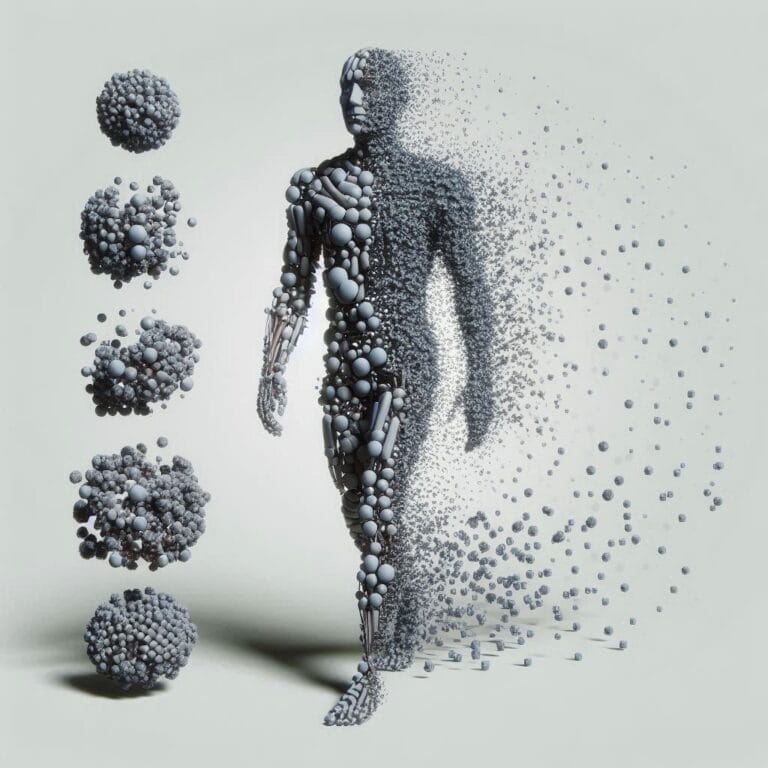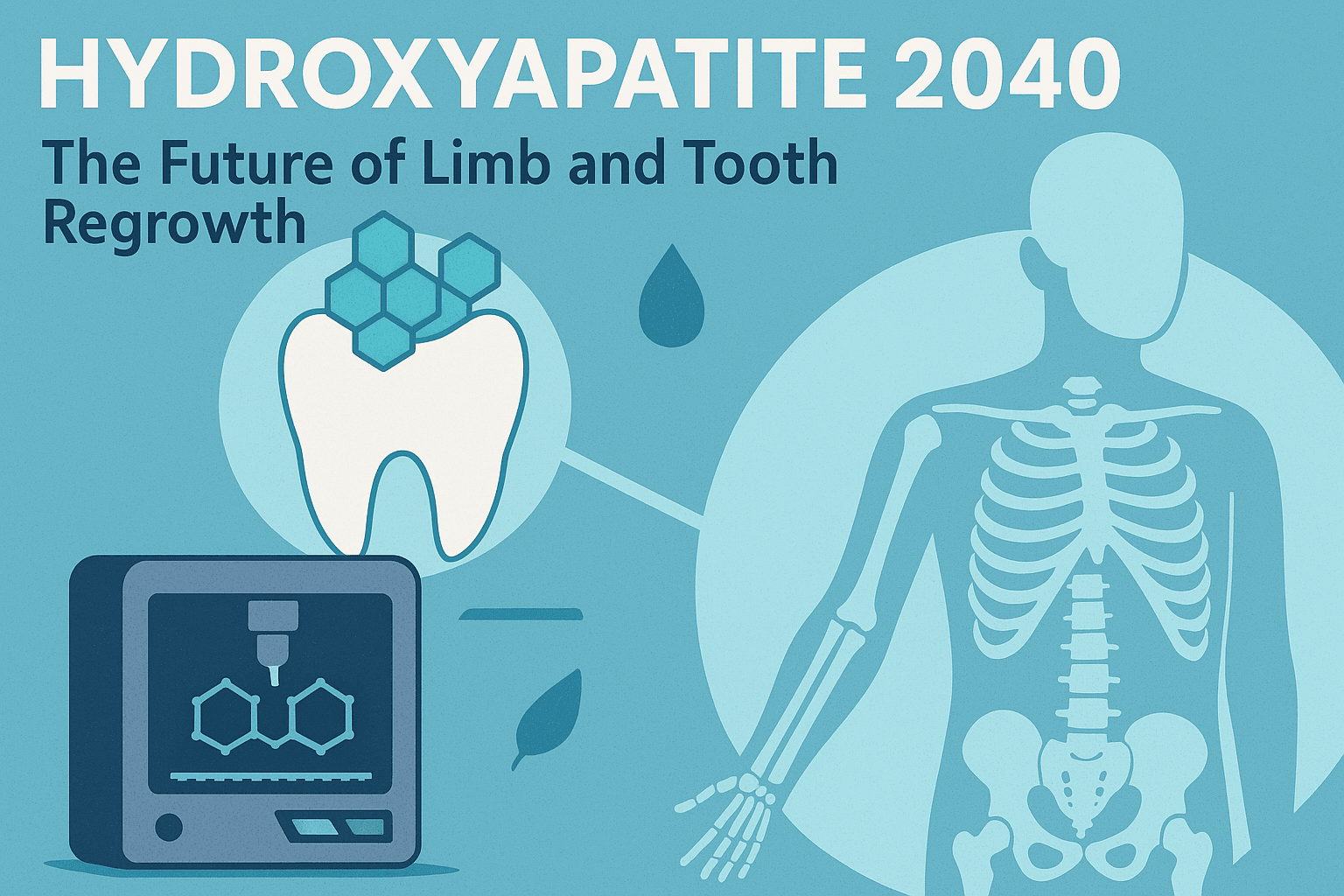Introduction to Audio Computers:
Imagine a world where you no longer need to be tethered to a screen or keyboard to interact with your computer. Instead, you can simply talk to it, and it will understand and respond to your needs in real-time. This is not a distant sci-fi dream but a rapidly approaching reality thanks to the advent of audio computers. Audio computers represent a transformative shift in human-computer interaction. This concept revolves around a new kind of computing device designed to engage users through natural language and auditory interfaces, making technology more accessible, intuitive, and human-like.

Experience revolutionary Natural Language Interaction and Augmented Reality Audio with game-changing audio computers. Explore the power of psychoacoustics and conversational AI.
Consider your daily routine: you wake up and ask your audio computer for the latest news, weather updates, and your schedule for the day while you’re brushing your teeth. During your morning commute, you can dictate emails, set reminders, and even have your favorite book read aloud to you, all hands-free. At work, instead of being glued to a screen, you can have your audio computer read out important documents, provide real-time translations during meetings, or remind you of critical deadlines. In the evening, you can ask your audio computer to play your favorite music, adjust the lighting, or even help you cook by providing step-by-step recipe instructions. These real-life examples illustrate the seamless integration of audio computers into everyday life, enhancing productivity and convenience.
This revolutionary approach aims to create more intuitive and human-like interactions, moving away from traditional screen-based interfaces. By leveraging advanced natural language processing, conversational AI, and auditory interfaces, audio computers are designed to understand and respond to human speech more naturally. This not only makes technology more accessible to those who may struggle with traditional interfaces but also opens up new possibilities for multitasking and on-the-go computing. As we embrace this new era of audio computers, we are witnessing the future of computing unfold, where technology is truly at our service, understanding and anticipating our needs just like a personal assistant.
Key Features of Audio Computers:
Natural Language Interaction:
-
- Traditional Computer Interfaces: Conventional computers often rely on visual and tactile inputs. Users interact with these devices through a combination of mouse clicks, keyboard typing, and touch gestures. This interaction model requires users to learn and adapt to a specific set of commands and navigational paths, which can sometimes be unintuitive or cumbersome.
- Advanced Natural Language Processing (NLP): Audio computers, on the other hand, utilize cutting-edge NLP to interpret and process human speech more naturally and conversationally. NLP algorithms analyze spoken language to understand context, intent, and nuances in the conversation. For instance, if you ask an audio computer about the weather, it doesn’t just return a generic forecast; it understands the context of your inquiry and may provide detailed information like temperature trends, and pollen counts, or even suggest suitable clothing.
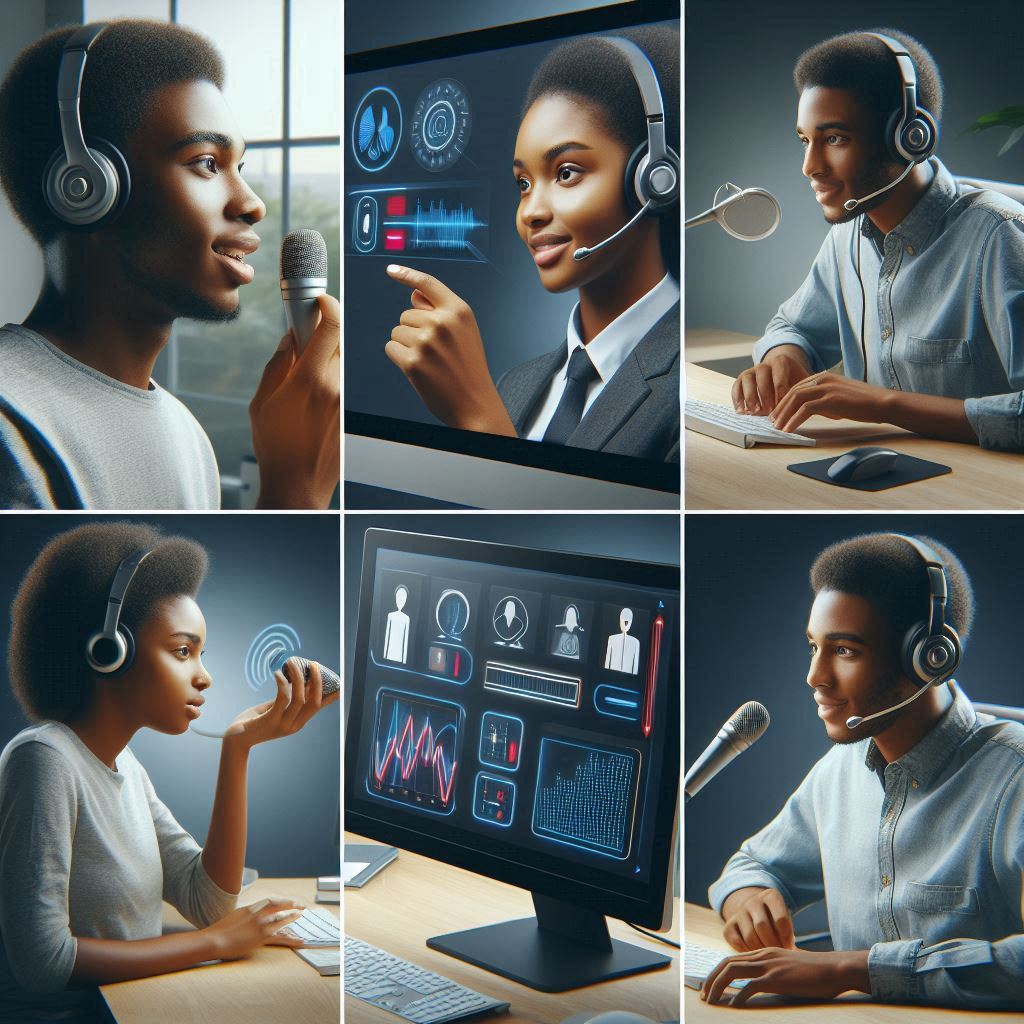
- Conversational Engagement: The objective is to transition from mechanical, command-based interactions to fluid, engaging conversations. Instead of issuing specific commands and receiving robotic responses, users can engage in a back-and-forth dialogue with their audio computer. For example, if you inquire about a recipe, the audio computer can ask follow-up questions to narrow down your preferences, offer variations based on dietary restrictions, and even conversationally provide cooking tips. This approach aims to make interactions with technology as natural as conversing with a person, enhancing user experience and accessibility.
Advanced Audio Interfaces:
-
- Screen-Free Design: Audio computers are intentionally designed without screens to promote a more immersive auditory experience. These devices encourage users to engage through sound alone by eliminating visual distractions, fostering a more focused and intuitive interaction. This design choice aligns with the goal of making technology less obtrusive and more seamlessly integrated into daily activities.
- Wearable Technology: At first glance, a prototype audio computer might resemble a pair of high-tech earbuds, but it functions as a comprehensive computing device. This wearable design integrates advanced computing capabilities into a compact, lightweight form factor. Users can carry out various computing tasks—such as checking emails, setting reminders, or controlling smart home devices—through voice commands and auditory feedback. For instance, while walking or driving, users can interact with their audio computer to manage their schedules, receive navigation prompts, or even enjoy hands-free entertainment.
- Immersive Experience: The advanced audio interface offers an enhanced auditory experience by utilizing high-fidelity sound reproduction and spatial audio technologies. This allows users to experience a more immersive and realistic sound environment. For example, audio computers can create a 3D soundscape where users perceive sounds coming from different directions, improving the quality of virtual meetings, enhancing audio-based learning, or simply providing a more engaging entertainment experience.
These key features of audio computers represent a significant leap forward in the evolution of human-computer interaction, offering a more intuitive, immersive, and hands-free way to interact with technology. By leveraging natural language understanding and advanced audio interfaces, audio computers are set to transform how we integrate technology into our daily lives.
Contextual Understanding and Personalization:
-
- Building Context Through Conversations: Audio computers are designed to understand and adapt to users’ needs by building context from ongoing conversations with the help of conversation AI. Unlike traditional devices that operate based on isolated commands, these advanced systems continuously learn from interactions. They track conversational history and user preferences to provide increasingly relevant responses. For instance, if you frequently discuss certain topics or use specific phrases, the audio computer uses this information to tailor its assistance. Over time, it can predict your needs more accurately and provide support that’s not only relevant but also timely.

- Personalized Interaction: This personalized approach ensures that interactions are not just reactive but also proactive. Imagine you are preparing for a major public speaking event. Instead of merely responding to your requests for information or advice, the audio computer can offer encouragement based on your past interactions. It might detect signs of nervousness in your voice and respond with motivational messages or practical tips, creating a supportive environment that goes beyond generic advice. This ability to understand and respond to emotional cues enhances the depth and quality of the interaction, making technology feel more like a personal assistant than a tool.
Mixed Audio Reality or Augmented reality Audio:
-
- Creating Enhanced Auditory Environments: One of the standout features of audio computers is their capability to craft a “mixed audio reality.” This involves advanced manipulation of ambient sounds to enhance the auditory experience. The technology allows users to experience soundscapes that are tailored to their needs, preferences, and environments. For example, in a bustling café with background chatter, an audio computer can isolate the voice of a conversation partner, making it clearer and easier to hear. This can significantly improve communication and focus in noisy settings by leveraging principles of psychoacoustics.
- Personalized Soundscapes: Audio computers are also capable of creating customized soundscapes that adapt to various situations. If you’re working in a noisy office, the device can filter out distracting background noise and enhance sounds important for your task, such as a phone call or music. Conversely, if you’re in a quiet space and want to simulate a relaxing beach environment, the audio computer can generate soothing ocean waves and seagull sounds. By understanding and applying psychoacoustic principles, these devices can craft auditory environments that enhance concentration, relaxation, or engagement, demonstrating the versatile applications of mixed audio reality in daily life.
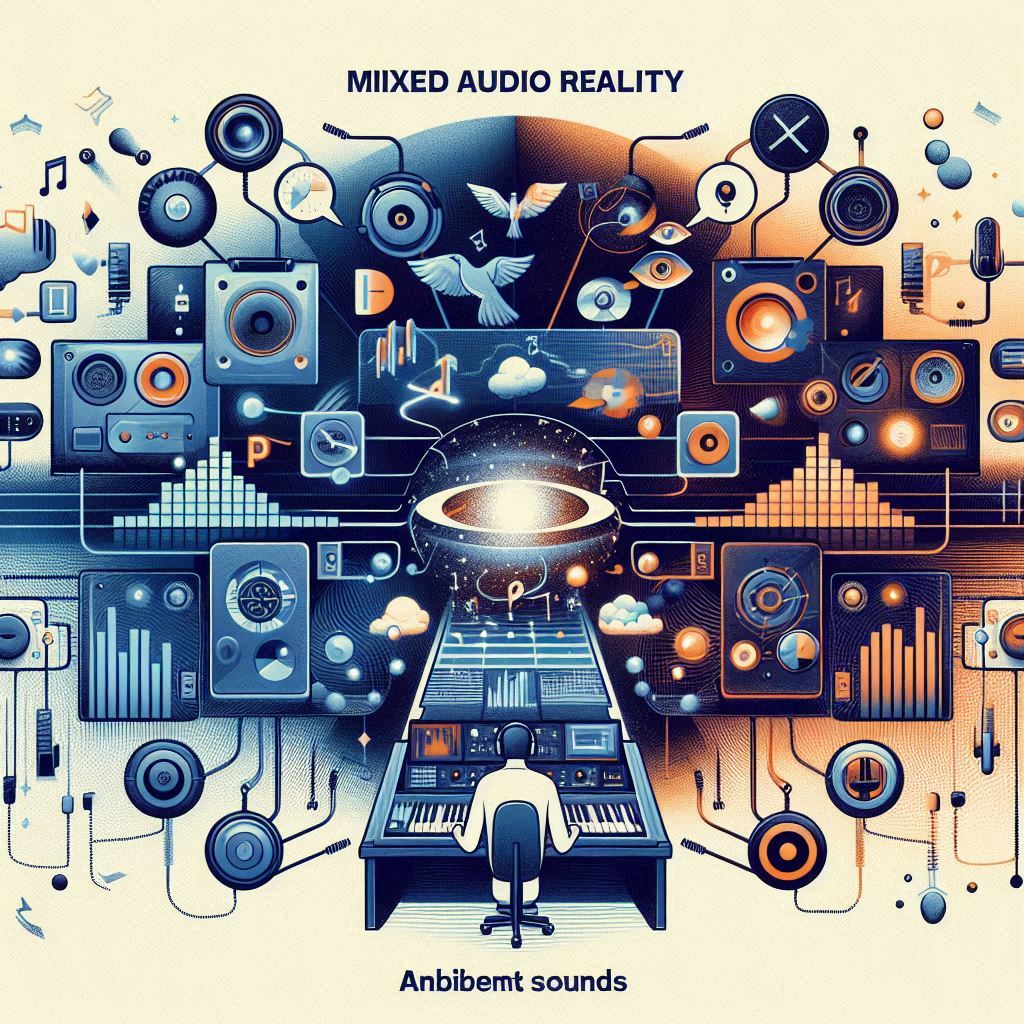
These features highlight how audio computers are revolutionizing user interaction by offering deeper personalization and immersive auditory experiences. By integrating contextual understanding and advanced audio manipulation through psychoacoustics, these devices are set to redefine how we engage with technology, making our interactions more intuitive, supportive, and tailored to individual needs.
Applications of Audio Computers:
Music Production and Sound Design:
-
- Revolutionizing Music Production: Audio computers have the potential to transform music production by integrating advanced auditory capabilities into the creative process. Imagine a scenario where you are composing a piece of music, and your audio computer provides real-time feedback on the harmony, rhythm, and dynamics of your composition. Through natural language interactions, you could ask the device to suggest alternative chord progressions, adjust sound levels, or even generate new musical ideas based on your preferences. This real-time collaboration allows for a more fluid and intuitive creative process.
- Assisting Sound Design: For sound designers, audio computers can facilitate the creation of immersive soundscapes. These devices can provide precise control over audio parameters and help in crafting unique sound effects or atmospheric sounds. By conversing with the audio computer, sound designers can instruct it to modify audio elements, test different effects, and analyze how changes impact the overall sound experience. This level of interactivity enhances the creative process, enabling the production of richer and more dynamic auditory experiences.
Education and Training:
-
- Personalized Learning Experiences: Audio computers can revolutionize education by offering highly personalized learning experiences. Educational apps powered by audio computing can engage students through interactive lessons delivered via natural language. For instance, a student learning a new language could have a conversation with an audio-based tutor that adapts to their proficiency level, corrects pronunciation in real time, and offers contextual explanations based on ongoing dialogues. This personalized approach ensures that learning is tailored to individual needs and progress.
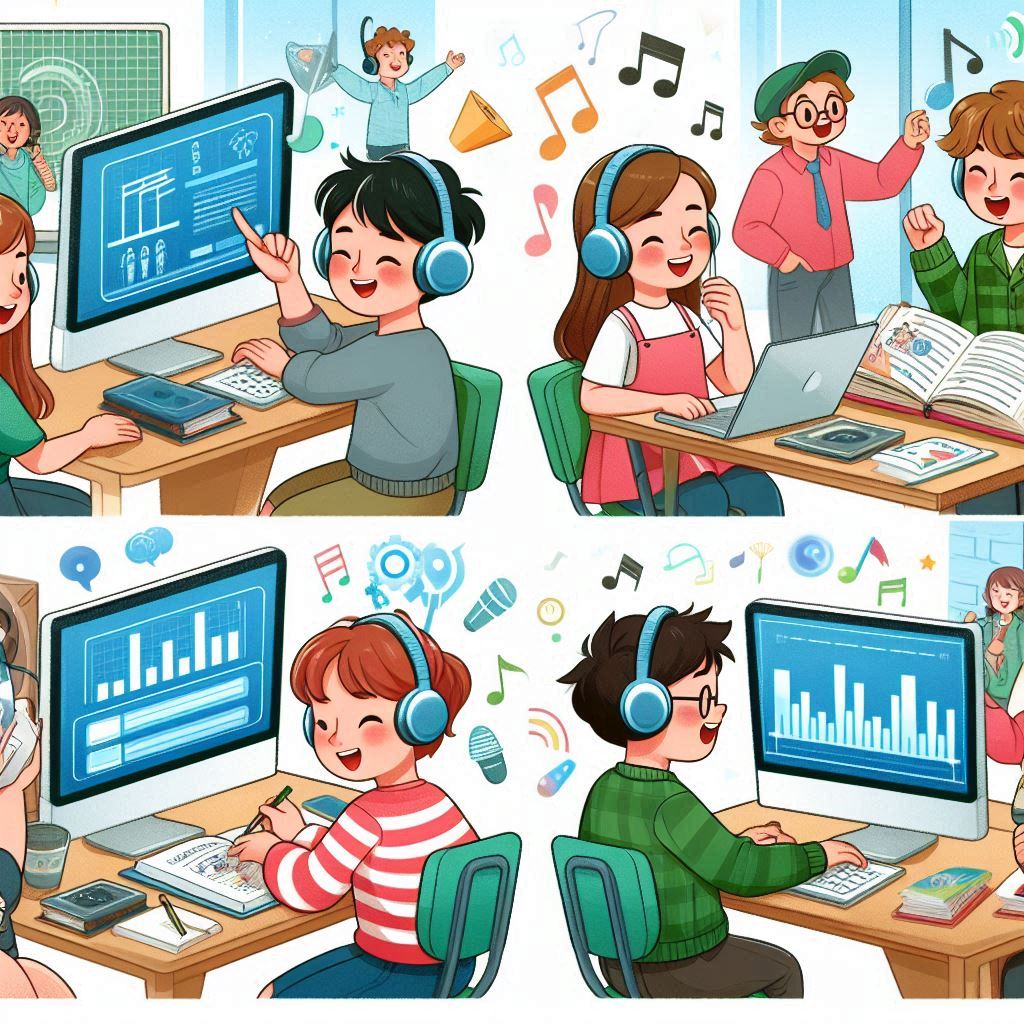
- On-Demand Expertise: Imagine an educational app that functions like a world-class professor, available on-demand. Students could interact with this app to explore complex subjects, receive detailed explanations, and engage in guided practice. The app could provide instant feedback on questions, offer motivational support, and adjust teaching strategies based on real-time conversations. This dynamic and responsive form of education enhances student engagement and facilitates a deeper understanding of the material.
Health and Fitness:
-
- Virtual Fitness Coaches: Audio computers can serve as virtual fitness coaches, offering personalized guidance on diet, exercise, and overall wellness. Through conversational interactions, users could receive customized workout plans, dietary advice, and motivational support. For example, during a workout session, the audio computer might provide real-time feedback on form, suggest modifications, and track progress. This interactive approach makes fitness routines more engaging and tailored to individual goals.
- Promoting Mental Well-Being: Beyond physical fitness, audio computers can contribute to mental well-being by generating relaxation and focus soundscapes. For instance, if you’re feeling stressed, you could request the audio computer to create a calming environment with sounds like gentle waves or ambient nature sounds. This ability to craft personalized auditory experiences helps users manage stress and improve concentration, showcasing the versatility of audio computers in supporting mental health.
Daily Productivity and Organization:
-
- Streamlining Daily Tasks: Audio computers can significantly enhance daily productivity by providing a conversational interface for managing tasks. Users can interact with their devices to handle various functions such as managing emails, scheduling appointments, and conducting online searches. For example, instead of typing out email responses, users could have a conversation with the audio computer to draft, edit, and send emails. This hands-free approach reduces the need for screens and keyboards, making task management more efficient and intuitive.
- Conversational Briefings: Imagine a scenario where your audio computer delivers a daily briefing of your schedule, important emails, and upcoming deadlines through a conversational update. This approach allows users to stay organized and informed without constantly checking their screens. By converting routine tasks into conversational interactions, audio computers help streamline daily activities and improve overall productivity.
These applications highlight how audio computers are set to revolutionize various aspects of daily life. By enhancing creativity, personalizing education, supporting health and fitness, and streamlining productivity, these devices offer a more intuitive and engaging way to interact with technology.
Future Trends in Audio Computing:
Integration with AI (Conversational AI) and Machine Learning:
-
- Advanced Contextual Understanding: The future of audio computing will be deeply intertwined with advancements in artificial intelligence (AI) and machine learning. These technologies will elevate audio computers by enabling them to understand complex contexts and anticipate user needs with unprecedented accuracy. For example, imagine an audio computer that, through continuous learning and analysis of your interactions, predicts when you might need a reminder for an upcoming meeting or suggests a break based on your speaking patterns indicating fatigue. This level of contextual awareness will transform how devices interact with users, making engagements more intuitive and seamless.
- Personalized Conversations: The integration of large language models (LLMs) and sophisticated AI algorithms will further enhance the conversational capabilities of audio computers. These models can analyze vast amounts of conversational data to provide highly personalized responses. For instance, if you frequently discuss specific topics or use certain phrases, the device could tailor its suggestions and feedback based on this history, making interactions more relevant and engaging. Additionally, future audio computers might offer multilingual support, allowing users to converse in multiple languages fluidly, bridging communication gaps and expanding accessibility.
- Predictive Assistance: AI and machine learning will also empower audio computers to offer predictive assistance. For instance, an audio computer might analyze your daily routines and upcoming tasks to proactively suggest adjustments or improvements, such as recommending optimal times for meetings or alerting you to potential scheduling conflicts before they arise. This predictive capability will enable users to manage their lives more efficiently and reduce the cognitive load associated with planning and organization.
Expansion of Use Cases:
-
- Audio-Based Navigation Systems: One exciting potential application is the development of audio-based navigation systems designed specifically for visually impaired individuals. These systems could provide real-time auditory guidance, such as spoken directions, obstacle alerts, and contextual information about surroundings. By leveraging spatial audio technology, users could receive precise, location-based cues that enhance their mobility and independence in various environments.
- Professional Virtual Assistants: In professional settings, audio computers could evolve into advanced virtual assistants capable of handling complex tasks. For example, in a high-stakes business meeting, an audio computer might assist by providing real-time summaries of discussions, suggesting actionable items, and even facilitating multi-party communication through voice-based collaboration tools. This functionality could streamline workflows and enhance productivity in corporate environments.
- Interactive Entertainment Experiences: The realm of interactive entertainment will also benefit from audio computing innovations. Imagine immersive audio experiences where users engage with dynamic soundscapes that adapt to their interactions in real time. For instance, audio computers could create personalized soundtracks for video games or interactive storytelling experiences, where the auditory environment evolves based on user choices and actions, providing a deeper level of engagement and immersion.
Supporting Individuals with Hearing Impairments:
Enhanced Hearing Aids:
-
- Personalized Audio Enhancement: Audio computers could integrate advanced algorithms to fine-tune hearing aids for better sound clarity. They can adjust settings based on the specific hearing needs of the user, such as amplifying speech while reducing background noise. This personalization could be achieved through real-time analysis of the user’s auditory environment and preferences.
- Spatial Audio Cues: By leveraging spatial audio technology, audio computers could provide directional cues to help users better understand where sounds are coming from. This could be particularly beneficial in environments where multiple conversations or sounds occur simultaneously.
Real-Time Speech-to-Text:
-
- Live Captioning: Audio computers equipped with speech recognition capabilities could offer real-time captioning of conversations. This would enable individuals with hearing impairments to read what others are saying during meetings, social gatherings, or public events. The system could be designed to display captions on a screen or through a wearable device.
- Customizable Text Output: The text output can be customized for readability and user preferences, such as font size, color, and background contrast, ensuring that the information is accessible and comfortable to read.
Supporting Individuals Who Have Lost the Ability to Speak or Hear:
Speech Synthesis and Augmentation:
-
- Text-to-Speech (TTS): For individuals who have lost the ability to speak, audio computers can utilize TTS technology to convert typed or selected text into natural-sounding speech. Advanced TTS systems can mimic the user’s voice or use a preferred synthetic voice to communicate more personally.
- Communication Aids: Audio computers could act as communication aids by storing frequently used phrases or responses, allowing users to quickly generate spoken output for various situations. This could include pre-set messages for common interactions or customizable phrases based on individual needs.
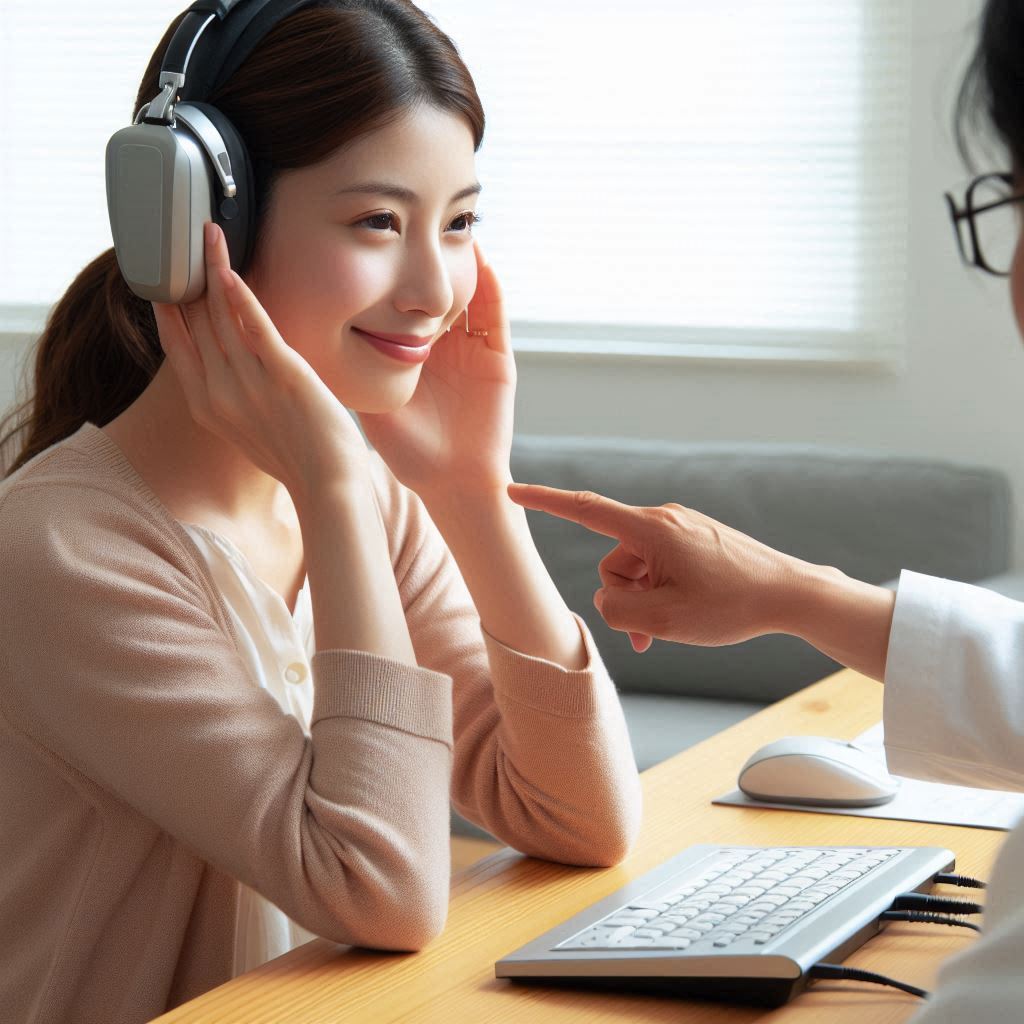
Visual and Tactile Feedback:
-
- Visual Interfaces: While audio computers are primarily auditory, they can be paired with visual displays or wearable devices to provide additional feedback. For example, a screen could show visual notifications or messages, and wearable devices could offer tactile feedback (such as vibrations) to alert users to important cues or interactions.
- Braille Integration: For users with combined vision and hearing impairments, audio computers could be integrated with Braille displays to provide textual information in a tactile format. This would enable users to receive information through both auditory and tactile means, enhancing accessibility.
Assistive Communication Platforms:
-
- Custom Communication Solutions: Audio computers could support specialized communication platforms that allow users to interact using alternative input methods, such as eye-tracking or gesture recognition. These platforms can be integrated with the audio computer to enable effective communication through various modalities.
Ethical and Privacy Considerations:
-
- Data Security and Privacy: As audio computers become more integrated into daily life, safeguarding user privacy and ensuring secure data handling will be paramount. Future developments will need to implement robust encryption methods and transparent data practices to protect sensitive information. For example, users should have clear control over what data is collected and how it is used, with options to manage or delete their information as needed.
- Ethical AI Usage: Ethical considerations will also play a crucial role in the deployment of audio computing technologies. Developers will need to address issues related to consent, data ownership, and the responsible use of AI. Creating guidelines that prevent misuse of audio data and ensuring that AI models do not reinforce biases will be essential for building trust and fostering positive user experiences. Additionally, prioritizing ethical design will involve creating systems that respect user autonomy and avoid manipulative practices, such as excessive attention monetization or intrusive data collection.
These future trends in audio computing highlight a transformative shift towards more intelligent, personalized, and immersive technology. As advancements continue, audio computers are set to revolutionize various aspects of life, from enhancing accessibility and professional productivity to providing novel entertainment experiences. Balancing innovation with ethical considerations will be key to unlocking the full potential of this exciting technology while ensuring it serves users’ best interests.
Conclusion
Audio computers mark a transformative leap in the evolution of computing technology. By harnessing the power of natural language processing and immersive auditory interfaces, these devices are set to revolutionize the way we interact with technology. They promise to deliver more intuitive, efficient, and human-like interactions, breaking away from traditional screen-based interfaces and offering a new dimension of engagement.
The potential applications of audio computers are vast and varied, ranging from personalized education and health management to advanced music production and daily productivity. As this technology advances, it will continue to shape and redefine numerous industries, opening doors to innovative solutions that enhance our daily lives.
We’d love to hear from you: How do you envision integrating audio computers into your daily routine? What potential applications or features excite you the most? Share your thoughts and insights with us!
For more in-depth discussions and updates on cutting-edge technologies, check out our other blogs at Evolution of the Progress. Your feedback and engagement help us continue to provide valuable content. Together, let’s navigate the exciting possibilities that lie ahead!
Explore more fascinating topics and stay ahead of technological trends with our comprehensive blog posts.



